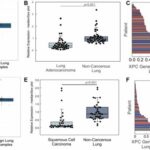
In a groundbreaking study published in the Journal of Exposure Science & Environmental Epidemiology, researchers have unveiled pivotal insights into the relationship between perfluoroalkyl substances (PFAS) exposure and kidney function deterioration. This exhaustive longitudinal and cross-sectional investigation, led by Eklund, Taj, Dunder, and their colleagues, propels our understanding of how these persistent, synthetic chemicals influence renal health over time. As PFAS continue to be detected ubiquitously across global ecosystems and human populations, this research sheds urgent light on the biological consequences stemming from chronic exposure to these compounds.
PFAS, a broad class of man-made chemicals used since the mid-20th century, are famously resistant to heat, water, and oil, rendering them indispensable in industrial applications and consumer products such as firefighting foams, non-stick cookware, and water-repellent fabrics. However, their chemical stability also means they persist environmentally and bioaccumulate within human tissues. Over decades, health concerns have arisen surrounding PFAS linkage to immunotoxicity, hormonal disruptions, and various organ impairments, but the kidney—central in blood filtration and waste elimination—remains one of the most critical targets requiring comprehensive study.
The investigators employed a dual analytical approach, utilizing both longitudinal data tracing individual PFAS levels and kidney function markers over extended periods, and cross-sectional data mapping exposure and renal metrics across diverse population cohorts. This method spanned several years and incorporated a multitude of biomarkers—including serum creatinine, estimated glomerular filtration rate (eGFR), and urinary albumin-to-creatinine ratio—to provide a robust characterization of kidney health status in relation to PFAS burden. Such a design emphasizes causal inference and temporal dynamics, distinguishing this work from previous snapshots of exposure-effect correlations.
.adsslot_K6xJ70DYOk{width:728px !important;height:90px !important;}
@media(max-width:1199px){ .adsslot_K6xJ70DYOk{width:468px !important;height:60px !important;}
}
@media(max-width:767px){ .adsslot_K6xJ70DYOk{width:320px !important;height:50px !important;}
}
ADVERTISEMENT
Central to the findings is a consistent association between elevated serum concentrations of certain legacy and emerging PFAS compounds and a decline in kidney filtration efficiency. Notably, the study reveals that long-chain PFAS, notorious for their environmental persistence, exhibit a dose-dependent relationship with accelerated reduction in eGFR, a definitive clinical indicator of chronic kidney disease progression. This implicates PFAS not merely as incidental contaminants but as active players in renal pathophysiology, potentially triggering or exacerbating nephron damage through oxidative stress, inflammation, or direct cytotoxicity.
Further mechanistic insights emerged from biomarkers suggesting that PFAS may impair tubular reabsorption processes and disrupt endothelial function within the nephron microenvironment. Animal studies have previously hinted at PFAS-induced mitochondrial dysfunction and apoptotic pathways in renal tissue, and these human data now offer compelling epidemiological validation. The renal impairment linked to PFAS corresponded with altered electrolyte handling and proteinuria, factors associated with increased cardiovascular risk, underscoring the systemic implications of persistent chemical exposure beyond the kidney.
Intriguingly, the investigation also parsed variations in susceptibility based on demographic factors. Age, sex, and genetic polymorphisms modulating xenobiotic metabolism appeared to influence individual vulnerability to PFAS toxicity. Older adults and individuals with certain allelic variants presented more pronounced declines in renal metrics, highlighting an urgent need for targeted public health interventions and personalized exposure mitigation strategies. These nuances in exposure-outcome relationships emphasize that universal safety thresholds for PFAS may inadequately protect the most at-risk populations.
The temporal scope of the study was particularly revealing, offering a rare glimpse into how chronic exposure accumulates and manifests clinically over years. While short-term exposure might yield negligible effects detectable by routine screening, sustained PFAS bioaccumulation carries insidious renal consequences that only emerge with longitudinal surveillance. This finding complicates regulatory risk assessments that often rely on acute toxicity studies and underscores the importance of integrating chronic exposure data in environmental health policymaking.
This research comes at a pivotal crossroads as regulatory agencies worldwide grapple with tightening PFAS limits amidst public outcry and mounting litigation. The demonstration of PFAS-associated renal decline lends substantial weight to calls for comprehensive bans, stricter emission controls, and accelerated remediation efforts targeting contaminated water supplies and industrial discharges. Moreover, it amplifies the demand for improved biomonitoring infrastructure capable of capturing evolving PFAS inventories and their health sequelae.
An important dimension of the study lies in its interdisciplinary collaboration, merging epidemiological rigor with environmental chemistry and nephrology. Advanced analytical techniques such as high-resolution mass spectrometry enabled precise quantification of PFAS species, including novel and replacement compounds often overlooked in legacy analyses. This nuanced exposure profiling allows for a clearer attribution of renal risks to specific PFAS agents, informing safer chemical design and substitution policies in the future.
The implications for clinical practice are equally profound. Given the silent and progressive nature of PFAS-induced renal impairment, early screening for PFAS exposure in patients with unexplained declines in kidney function could become a vital preventive measure. Clinicians might also prioritize reducing patients’ PFAS loads through dietary counseling, behavioral changes, and advocating for cleaner environments. As individualized medicine evolves, integrating environmental exposures such as PFAS into patient risk profiles will be essential for comprehensive care.
Despite its strengths, the study acknowledges limitations inherent to observational designs, including residual confounding and the challenge of disentangling mixed exposures prevalent in modern life. However, the combination of longitudinal tracking and cross-sectional snapshots provides a compelling triangulation of evidence. Future investigations are warranted to elucidate the biological pathways linking PFAS to renal cellular injury and to explore potential protective agents that might mitigate these effects.
In sum, this landmark research represents a clarion call about the hidden dangers of perfluoroalkyl substances lurking within our bodies and environments. By elucidating the clear link between chronic PFAS exposure and kidney function decline, it challenges the complacency surrounding these “forever chemicals” and galvanizes a reassessment of chemical safety paradigms on a global scale. For millions potentially exposed, the message is stark yet actionable: vigilance, remediation, and innovation are imperative to safeguard renal health against this pervasive toxic threat.
As this scientific narrative unfolds, society faces critical decisions balancing industrial utility with human wellbeing. The study by Eklund and colleagues illuminates a path forward grounded in evidence and empathy—advocating for a future where chemical stewardship prioritizes lifelong health, and environmental contaminants no longer compromise the foundational function of human kidneys.
Subject of Research:
Perfluoroalkyl substances (PFAS) exposure and its impact on kidney function.
Article Title:
Longitudinal and cross-sectional analysis of perfluoroalkyl substances and kidney function.
Article References:
Eklund, A., Taj, T., Dunder, L. et al. Longitudinal and cross-sectional analysis of perfluoroalkyl substances and kidney function. J Expo Sci Environ Epidemiol (2025). https://doi.org/10.1038/s41370-025-00785-z
Image Credits:
AI Generated
DOI:
https://doi.org/10.1038/s41370-025-00785-z
Tags: bioaccumulation of synthetic chemicalschronic PFAS exposure consequencesconsumer products containing PFASenvironmental impact of PFAShealth risks of persistent chemicalsimmunotoxicity and PFAS linkageindustrial applications of PFASkidney function impairment from chemicalslongitudinal and cross-sectional investigationperfluoroalkyl substances exposure effectsPFAS kidney health studyrenal health deterioration research


